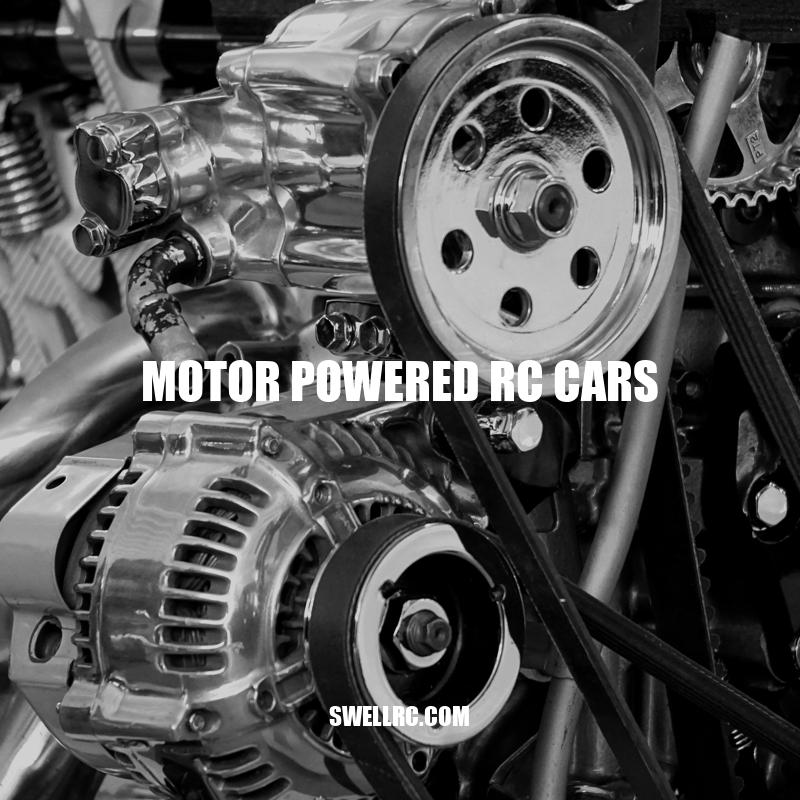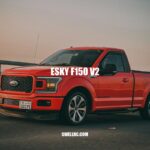Exploring Motor Powered RC Cars: Features, Types, and Maintenance
Motor-powered RC cars are miniature vehicles that are controlled remotely by a handheld device. These toys are exciting, thrilling, and provide endless entertainment, making them popular among people of all ages. RC car enthusiasts and professionals often customize their cars, experimenting with different motor types, suspension systems, and other mechanical and electronic components. Despite the varying structures and specifications, all RC cars run on a motor that provides the power to mobilize the vehicle. Two types of motors are typically used in RC cars: brushed and brushless. Brushed motors are the most common and are less expensive than brushless motors, making them a good choice for beginners or those on a budget. Brushless motors are more advanced, more efficient, and have an extended lifespan. Professional hobbyists typically use brushless motors for their high-end cars that perform at high speeds and require top-of-the-line functionality. Regardless of the motor type, motor-powered RC cars are a lot of fun and offer a unique way to enjoy the thrill of racing without getting behind the wheel of a full-size car.
RC cars come in various types with different specifications that cater to different types of users, such as beginners, hobbyists, and professional racers. Depending on the user’s needs, the motor, chassis, suspension system, and other components can vary significantly.
Some common types of motor-powered RC cars include:
- Off-road Buggies – designed for all types of off-road terrain with high ground clearance and rugged tires
- Drift cars – designed for making sharp turns at high speeds, ideal for competitive racing
- Rally cars – designed for on and off-road terrain with high-performance capabilities
- Street racers – designed for high-speed racing on flat, paved surfaces like streets and race tracks
Major brands like Traxxas, HPI Racing, and Losi offer a vast selection of motor-powered RC cars catering to various users’ needs. Each brand has its own unique features, so it’s essential to research each brand and read reviews to find the best fit for you. Many online forums like RC Universe and RCGroups are dedicated to discussions about motor-powered RC cars that provide a wealth of knowledge on the subject.
What are the different types of RC car motors?
There are four different types of DC motors for RC cars on the market: brushed motor, brushless motor, servo motor, and vibrating motor. However, the most commonly found ones in RC vehicles are brushed and brushless motors. For more information on the topic, you can refer to various online RC car websites like RCplanet.com, Amainhobbies.com, Hobbyking.com, and many more.
Motor Types for RC Cars
There are two primary types of motors used in motor-powered RC cars: brushed motors and brushless motors. Each type has its own set of advantages and disadvantages.
Brushed Motors
- Simple and less expensive.
- Low maintenance cost.
- Slower compared to brushless motors.
Brushless Motors
- More complex technology, higher quality.
- More speed, higher power and torque.
- Higher acceleration and top speed.
- Generally lasts longer, requiring less frequent maintenance.
- More expensive.
Comparing the two types of motors, brushless motors are generally more powerful and offer better performance, but come with a higher price tag. Most professional RC car racers prefer brushless motors for their better performance and long-lasting capabilities. On the other hand, brushed motors are more suited for beginners as they’re simpler to use and come at a lower cost.
Interestingly, brushed motors are older technology and have been commonly used in RC cars since the 1960s. Brushless motors, on the other hand, were first developed in the 1980s but only became widely adopted in the late 1990s.
Some popular motor brands in the motor-powered RC car industry include Tekin, Castle Creations, and Hobbywing. The chart below compares brushed motors and brushless motors in terms of features and specifications.
| Brushed Motor | Brushless Motor | |
|---|---|---|
| Price | Lower | Higher |
| Speed | Slower | Faster |
| Maintenance | Higher | Lower |
| Acceleration | Lower | Higher |
| Power | Lower | Higher |
| Top Speed | Lower | Higher |
| Lifespan | Shorter | Longer |
What is better a brushed or brushless motor?
According to Consumer Reports, brushless motors are more energy-efficient than brushed motors and have a longer battery life. Brushless motors don’t have brushes that lose energy to friction, and they can often run on battery power for up to 50 percent longer. If you’re considering purchasing a power tool, it may be worth looking into brushless options to get the most bang for your buck.
Additional Factors Affecting RC Car Performance
Apart from the motor, there are several other important components that can affect RC car performance:
Tires
- Tires provide the grip and traction an RC car needs to perform well.
- Some tires are better suited for off-road terrain, while others are designed for on-road racing.
- Soft compound tires provide more grip but wear out faster, while hard compound tires have less grip but last longer.
Gearbox
- The gearbox determines the speed and torque of an RC car.
- Changing the gear ratio can affect the vehicle’s acceleration and top speed.
- Two-speed gearboxes allow drivers to switch between different gears during a race to optimize performance.
Suspension
- The suspension system allows RC cars to handle jumps, corners, and uneven terrain with ease.
- Some RC cars have adjustable suspension that allows drivers to tweak the vehicle’s handling and performance.
- Oil-filled shocks offer better damping and help absorb impacts from jumps and bumps.
Other factors that can impact an RC car’s performance include the weight of the car, the aerodynamics of the body shell, and the battery’s capacity and voltage.
It’s important to note that different RC cars are designed for different purposes, such as racing, crawling, or drifting. As such, the components and tuning required for optimal performance will differ. For example, a racing RC car will have different tire requirements compared to a crawling RC car.
There are many online resources available for hobbyists looking to fine-tune their RC cars for maximum performance, including online stores that sell performance parts and upgrades.
What makes an RC car go faster?
To make an RC car go faster, you need to change the gear ratio. A larger pinion gear or a smaller spur gear will increase the speed. On the other hand, a smaller pinion gear or a larger spur gear will provide more torque and acceleration but lessen the top speed. You can modify one or both gears to attain the desired outcome. For additional information on RC car modifications and upgrades, check out online forums and hobby shops specializing in RC cars.
Conclusion
In conclusion, motor-powered RC cars are an exciting hobby that provides endless hours of entertainment. Choosing the right motor for your RC car is crucial for maximizing its performance and speed. Brushed motors are a great option for beginners or those on a budget, while brushless motors offer more advanced features and capabilities for professionals or seasoned hobbyists.
However, it’s important to remember that motor selection is just one factor that affects RC car performance. Tires, gearbox, suspension, weight, aerodynamics, and battery capacity are just a few additional components that play a role. By taking these factors into consideration and fine-tuning your RC car accordingly, you can ensure the best possible performance and enjoyment from your hobby.
With so many online resources available, it’s easy to find information, advice, and upgrades to enhance your RC car experience. Whether you’re racing, crawling, or just having fun with friends, motor-powered RC cars provide a rewarding and thrilling hobby that will keep you entertained for years to come.



